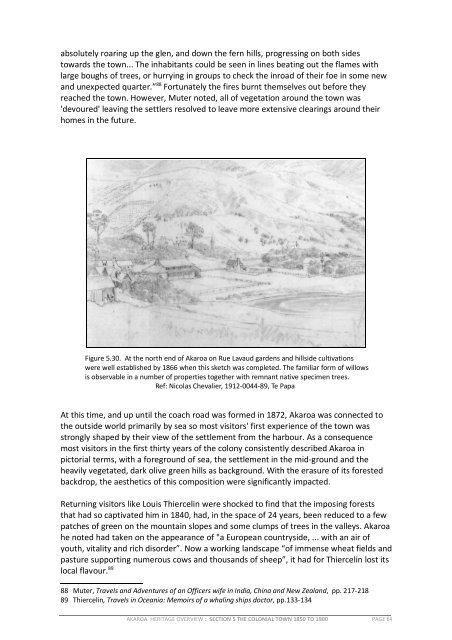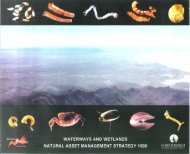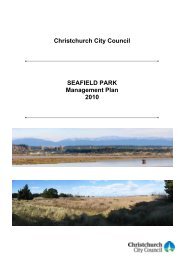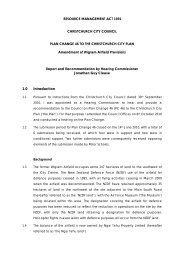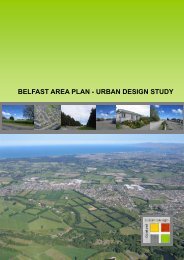Akaroa Historical Overview - Christchurch City Council
Akaroa Historical Overview - Christchurch City Council
Akaroa Historical Overview - Christchurch City Council
Create successful ePaper yourself
Turn your PDF publications into a flip-book with our unique Google optimized e-Paper software.
absolutely roaring up the glen, and down the fern hills, progressing on both sides<br />
towards the town... The inhabitants could be seen in lines beating out the flames with<br />
large boughs of trees, or hurrying in groups to check the inroad of their foe in some new<br />
and unexpected quarter.” 88 Fortunately the fires burnt themselves out before they<br />
reached the town. However, Muter noted, all of vegetation around the town was<br />
'devoured' leaving the settlers resolved to leave more extensive clearings around their<br />
homes in the future.<br />
Figure 5.30. At the north end of <strong>Akaroa</strong> on Rue Lavaud gardens and hillside cultivations<br />
were well established by 1866 when this sketch was completed. The familiar form of willows<br />
is observable in a number of properties together with remnant native specimen trees.<br />
Ref: Nicolas Chevalier, 1912-0044-89, Te Papa<br />
gardens and orchards laid out. Ref: 25<br />
At this time, and up until the coach road was formed in 1872, <strong>Akaroa</strong> was connected to<br />
the outside world primarily by sea so most visitors' first experience of the town was<br />
strongly shaped by their view of the settlement from the harbour. As a consequence<br />
most visitors in the first thirty years of the colony consistently described <strong>Akaroa</strong> in<br />
pictorial terms, with a foreground of sea, the settlement in the mid-ground and the<br />
heavily vegetated, dark olive green hills as background. With the erasure of its forested<br />
backdrop, the aesthetics of this composition were significantly impacted.<br />
Returning visitors like Louis Thiercelin were shocked to find that the imposing forests<br />
that had so captivated him in 1840, had, in the space of 24 years, been reduced to a few<br />
patches of green on the mountain slopes and some clumps of trees in the valleys. <strong>Akaroa</strong><br />
he noted had taken on the appearance of "a European countryside, ... with an air of<br />
youth, vitality and rich disorder”. Now a working landscape “of immense wheat fields and<br />
pasture supporting numerous cows and thousands of sheep”, it had for Thiercelin lost its<br />
local flavour. 89<br />
88 Muter, Travels and Adventures of an Officers wife in India, China and New Zealand, pp. 217-218<br />
89 Thiercelin, Travels in Oceania: Memoirs of a whaling ships doctor, pp.133-134<br />
AKAROA HERITAGE OVERVIEW : SECTION 5 THE COLONIAL TOWN 1850 TO 1900 PAGE 64


